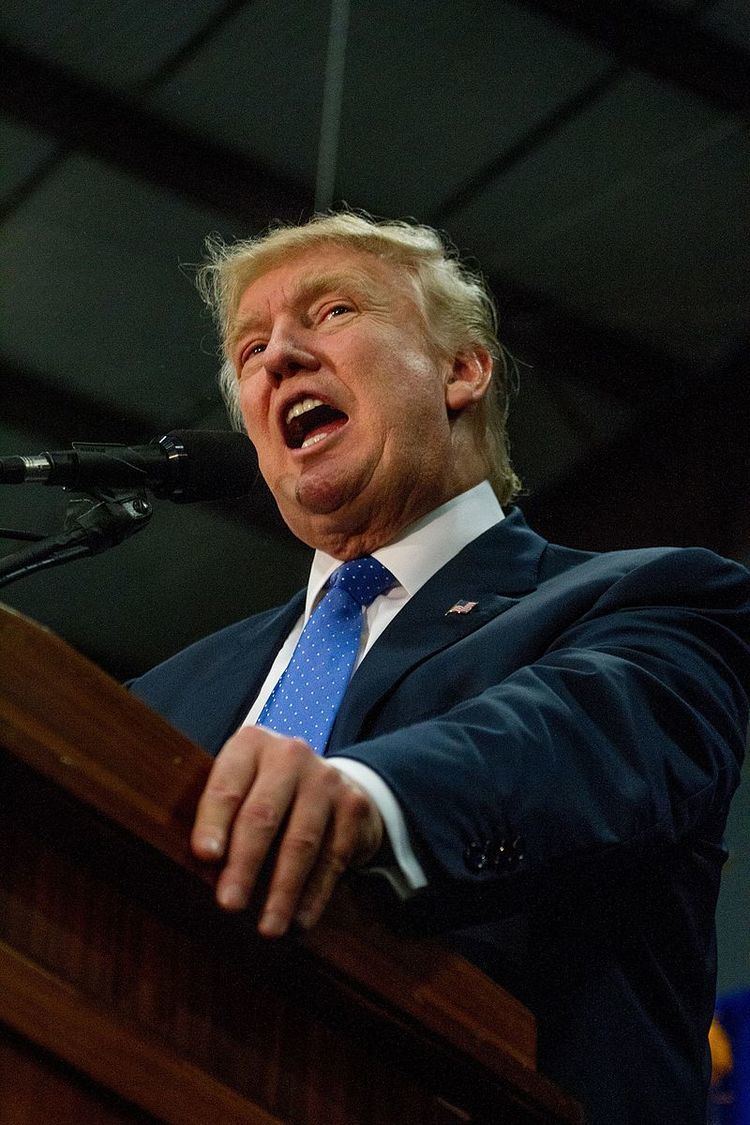 | ||
The Trump effect is a purported increase in school bullying in the United States caused by the rhetoric Donald Trump used during his 2016 presidential campaign. A survey of teachers by the Southern Poverty Law Center found that Trump's language was being used by students in classroom settings, having the effect of increasing bullying, especially against youth of color.
Contents
Original survey
On April 13, 2016, the non-profit Southern Poverty Law Center (SPLC) published a report called "The Trump Effect: The Impact of the Presidential Campaign on Our Nation's Schools". Based on a survey of 2000 teachers from SPLC's Teaching Tolerance program, the report found that the 2016 presidential election was stirring up racial tensions in American schools. Over half of the respondents reported an increase in uncivil political discourse in their classrooms and over a third observed an increase in anti-Muslim and anti-immigrant sentiment among students. Teachers reporting racially-motivated bullying incidents connected them to Trump's campaign rhetoric. The SPLC report concluded that children's behavior was being influenced by the divisive rhetoric of the 2016 election and named the rise in bullying the "Trump Effect".
National Public Radio NPR noted that the survey was largely anecdotal and did not comprise a representative sample of the nation's teachers. Bullying expert Dorothy Espelage noted that with the SPLC survey, "the data are not there to support the statement from a scientific-evidence-based perspective". The Cyberbullying Research Center concurred with her assessment, noting that the survey was "not precise enough to conclude one way or another if the 'Trump Effect' is impacting bullying experiences at school".
Response
After the publishing of the SPLC report, media outlets reported on the Trump effect and searched for evidence that it existed. In a report for Sky News, teachers were interviewed who observed that students had been demonstrating less tolerance for one another. Individual examples included children shouting "Trump" at Hispanic children and joking about deportation, nicknaming an Indian student "Isis", and using Trump campaign slogans as taunts. Epilepsy Foundation boardmember Tony Coelho said that rates of school bullying could be increasing, stating that "All of a sudden we have a national figure, who is bullying, who is mocking, who is doing all these things." Teaching Tolerance director Maureen Costello monitors the concerns of teachers and expressed worry at the Trump effect, saying that she found that the trend has continued since the results of the survey were published in April. Political strategist Bruce Haynes acknowledged that Trump was responsible for a rhetoric around immigration that has been "more angry and even raunchy" than in past races. Though Haynes was not surprised "that it has spilled over into classrooms in less than positive ways," he considers the report to be an unscientific assemblage of anecdotal stories.
The National Education Association (NEA) launched a campaign to inform people of "the harmful effects of Donald Trump's inflammatory rhetoric on America's schoolchildren." NEA president Lily Eskelsen García said that "The rise in vitriolic speech in classrooms and the anxiety created by Donald Trump" illustrated the need for anti-bullying initiatives. American Federation of Teachers president Randi Weingarten said of Trump that he has "created an environment of scapegoating and demonizing. It is influencing children and it is influencing behavior in schools."
As a campaign issue
During the second presidential debate, Hillary Clinton said that the harshness of Trump's words was affecting children, saying "Teachers and parents call it the 'Trump effect'. Bullying is up. A lot of people are feeling uneasy, a lot of kids are expressing their concerns." Politifact rated Clinton's claim as "mostly true", in part citing the SPLC survey.
